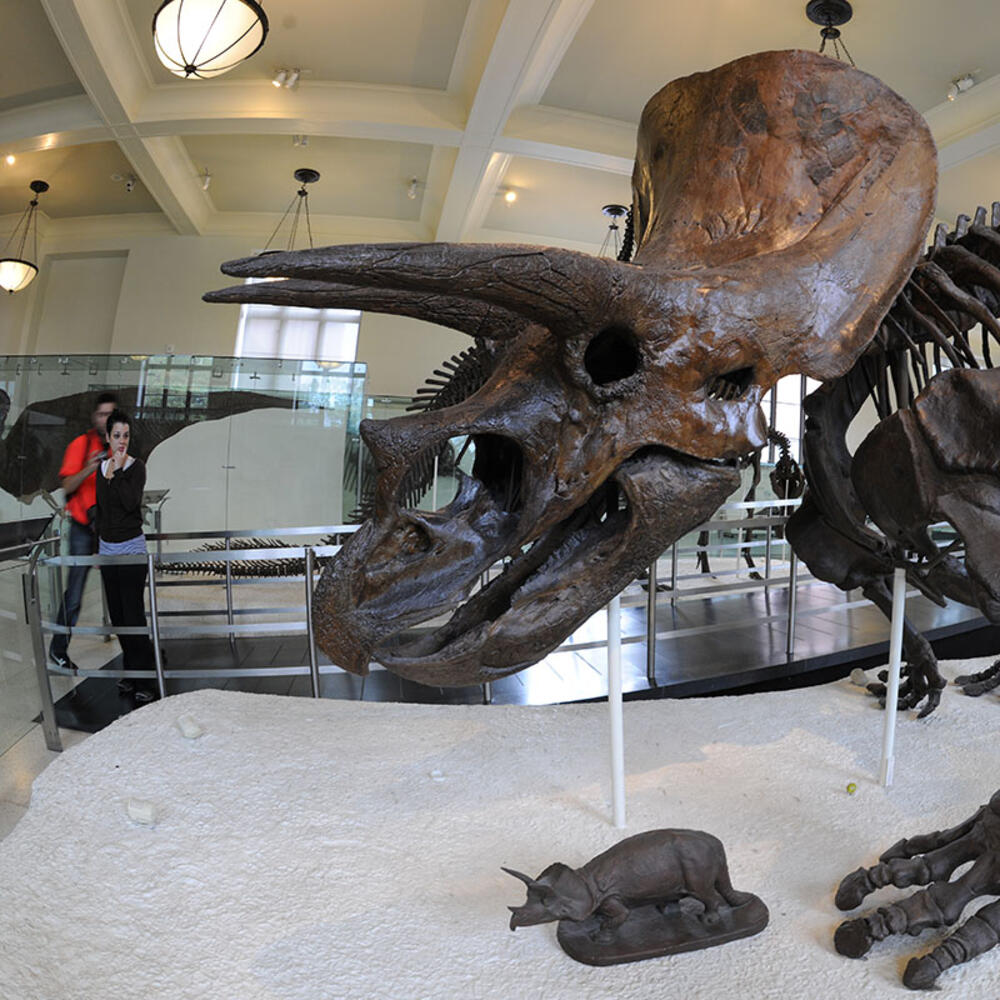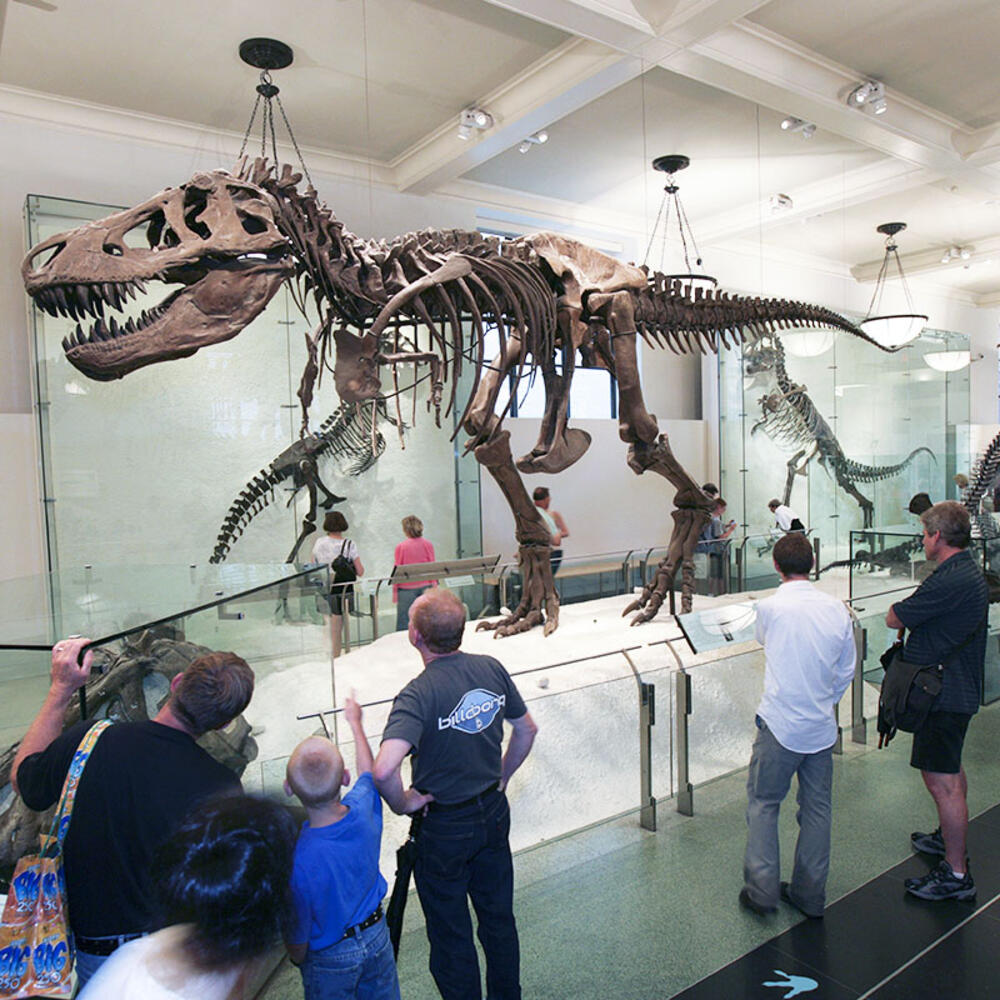The Dinosaurs on Display
D. Finnin/© AMNH
Miriam and Ira D. Wallach Orientation Center
The Miriam and Ira D. Wallach Orientation Center introduces visitors to key concepts presented in the Museum’s fourth-floor fossil halls, which display 600 fossil specimens—including more than 250 mammal fossil specimens and approximately 100 dinosaur fossil specimens. Eighty-five percent of specimens are actual fossils, as opposed to casts or reproductions. It is also home to The Titanosaur, the life-sized cast of a 122-foot-long sauropod dinosaur Patagotitan mayorum discovered in 2014.
The Organization of the Dinosaur Halls
The Museum’s dinosaur exhibits are organized to reflect evolutionary relationships, and a walk through the exhibition halls is like a walk along the trunk, branches, and twigs of the evolutionary tree for dinosaurs.
A thick black line on the floor, which starts in this hall and continues through the Hall of Vertebrate Origins, the Hall of Saurischian Dinosaurs, the Hall of Ornithischian Dinosaurs, the Hall of Primitive Mammals, and the Hall of Advanced Mammals, denotes the “trunk” of this tree.
Branching points along the main path that represent the evolution of new anatomical features, such as the hole in the center of the hip socket. At each branching point, visitors can walk off the main path to explore alcoves containing a group of closely related dinosaurs.
The ornithischians were an extremely diverse group of plant-eating sauropsids (reptiles). Many had complex and often bizarre adaptations for defense, display, feeding, and locomotion. The group includes armored dinosaurs, such as Stegosaurus and Ankylosaurus; duckbills and their relatives; and the horned and dome-headed dinosaurs, such as Triceratops and Pachycephalosaurus.

Saurischian dinosaurs include the giant plant-eating sauropods and the carnivorous theropods. This hall features the imposing mounts of Tyrannosaurus rex and Apatosaurus. The saurischian hand is the key to the group's remarkable history. Saurischians are characterized by grasping hands, in which the thumb is offset from the other fingers.
 D. Finnin/© AMNH
D. Finnin/© AMNH